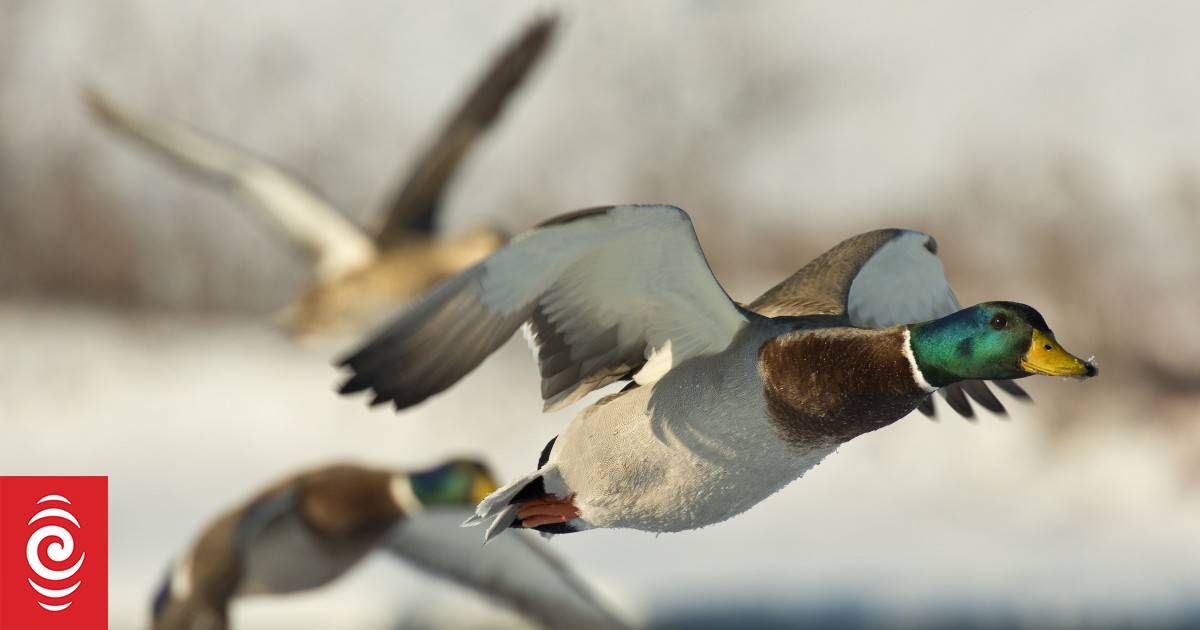Bird strikes: How common are collisions between birds and aircraft and how dangerous are they?


Photo: 123RF
The cause was given as a bird strike after flames erupted from the tail of a Boeing 737 that made an emergency landing in Invercargill this week.
Virgin Australia flight VA148 departed Queenstown Airport shortly before 6pm for Melbourne before turning around and landing safely in Invercargill an hour later.
The plane “encountered a problem shortly after takeoff and was diverted to Invercargill Airport,” Queenstown Airport said in a statement. A bird strike is suspected to be the cause.
Bird strikes have affected aircraft since their invention, and although technological advances help predict bird movements, it will likely remain a problem for a long time to come.
What happened on Monday?
Videos shared on social media appeared to show flames blazing from the plane as it flew over the Shotover Delta. (The New Zealand Airlines Pilots Association said that while flames appeared to be blazing from the back of one of the engines, the plane or engine “were not actually on fire.”)
A Queenstown man told RNZ he heard what he thought was a car backfiring before he saw the plane.
Passenger Michael Hayward said he heard a bang shortly after the plane took off and noticed flames coming from the engine compartment.
“I was sitting right behind the wing … you could almost feel the heat of the flames in the cabin,” he said. “There was definitely a certain amount of fear.”
Stuart Aggs, Chief Operations Officer of Virgin Australia, said in a statement that the plane was picked up by emergency services at Invercargill Airport. No one was injured.
When asked whether a bird strike had been confirmed as the cause of the incident, an airline spokesman said on Wednesday that no further information was available.
Queenstown Airport said a routine inspection shortly before the flight took off found no birds on the airfield. However, after the incident, a member of the airport emergency services found the remains of a mallard.
The Civil Aviation Authority is not currently conducting an investigation. And the Australian Transport Safety Bureau is gathering further information before deciding whether to investigate.
What is bird strike?
The general term for this is “wildlife collision” because in most cases birds are affected, but there are also cases where other animals and even people have been sucked into the running turbine of an aircraft.
The first reported bird strike is said to have occurred in 1905, when the Wright Flyer flown by Orville Wright struck a bird over a cornfield in Ohio.
The most famous bird strike case is US Airways Flight 1549 in 2009.
Shortly after pilot Chesley “Sully” Sullenberger took off from New York’s LaGuardia Airport, two large geese flew into the plane’s two engines. Both engines failed, and the pilot had to decide whether to try to reach an airport runway or attempt a water landing.
Sullenberger headed for the Hudson River and everyone on board survived.
This was a very rare and unfortunate case of both engines failing.
It is rare for aircraft to lose even a single engine in flight. They are designed to operate on just one. They do not have the maximum thrust to take off, but they can continue to fly and land, says Professor Doug Drury, head of the aviation department at CQUniversity Australia.
What happens?
Anything caught in a turbine engine “turns into shrapnel,” Drury says. The damage caused depends on the size and number of birds affected.
There will be a loud noise and possibly flames, he says. The pilot will turn off the engine and divert to another landing site.
Theoretically, it could continue on its way to its destination. “We (pilots) don’t want to take risks unless we absolutely have to,” says Drury.
Airlines can also be fined if they endanger passengers.
“We train intensively to operate single-engine aircraft. The Virgin crew did exactly what they were trained to do.”
Despite such incidents, it is important to remember that “flying is still the safest means of transport,” he says.
How often does it occur?
In New Zealand, the bird strike rate at airports is about four in 10,000 aircraft movements, according to the New Zealand Aviation Wildlife Hazard Group (NZAWHG).
According to the group, about 90 percent of cases occur at low altitudes at airports, during takeoff or landing.
It causes over $1.2 billion worth of aircraft damage worldwide every year.
According to Queenstown Airport, bird strikes are a known risk to air travel worldwide. However, the Civil Aviation Authority has classified the frequency of bird strikes at the airport as “low”.
“The species of most concern in Queenstown are oystercatchers and plovers, but also smaller birds such as finches, starlings and sparrows.”
While the “vast majority” of collisions involve birds, there have also been cases of aircraft colliding with rabbits in New Zealand, according to NZAWHG.



